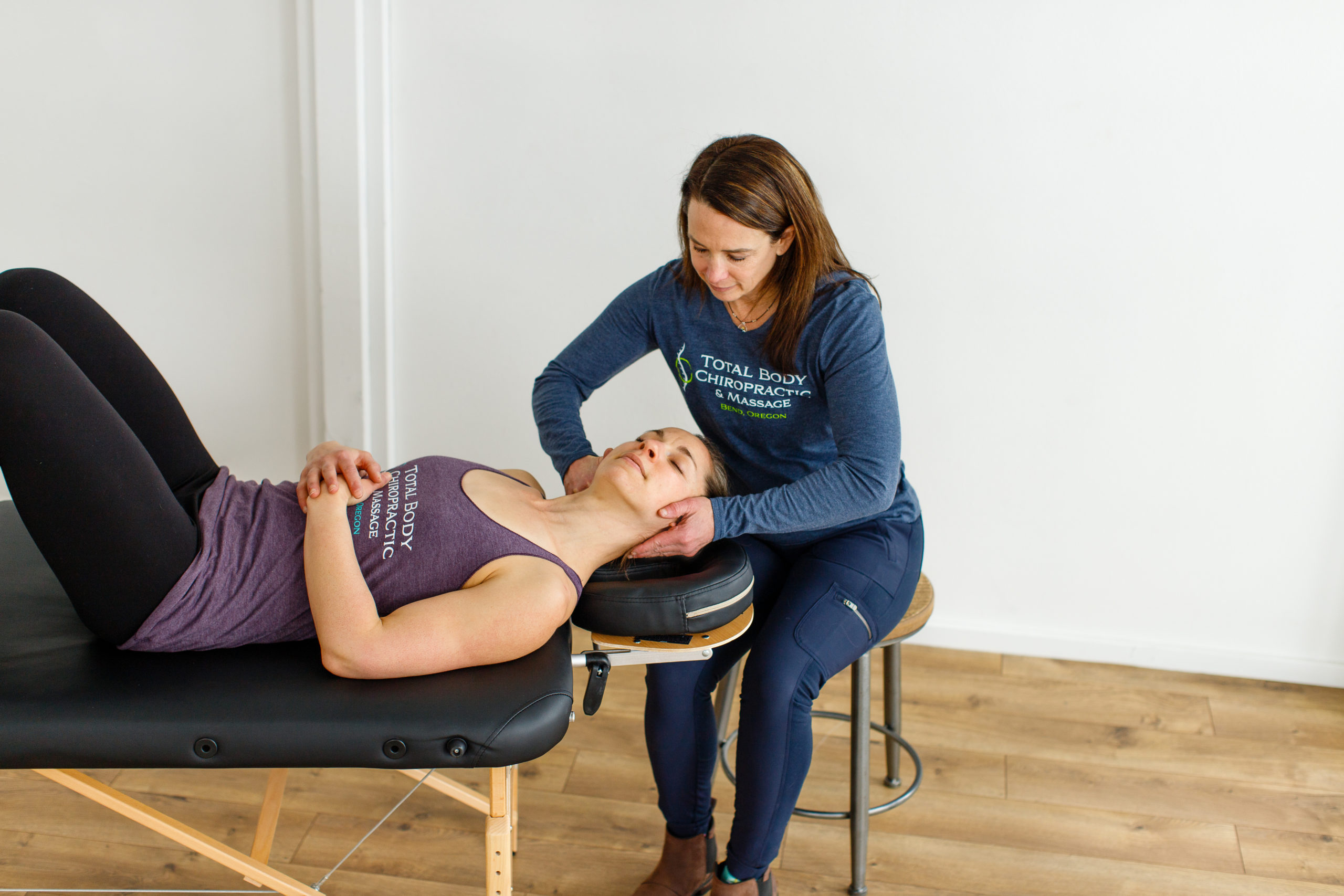Chiropractic for Tension Headaches: Your Path to Lasting Relief
Ever felt like a vice was slowly tightening around your head, squeezing every ounce of comfort out of your day? Welcome to the world of tension headaches. These debilitating episodes, characterized by a relentless dull ache, often send individuals on a wild chase for effective relief. But what if we told you there’s a holistic answer, lying in the realm of chiropractic for tension headaches? This approach goes beyond the surface, addressing the very roots of your discomfort. So, let’s embark on a transformative journey, exploring tension headaches, their triggers, and how chiropractic care could be your golden ticket to a pain-free life.
What Exactly Are Tension Headaches?

Tension headaches, aptly named for the tension-like sensation they produce, are the most common type of headache individuals encounter. They manifest as a constant ache, pressure or the sensation of a tight band around the head from muscle contractions, especially at the temples or back of the head and neck. Unlike migraine headaches, they don’t cause nausea or make one sensitive to light and sounds.
Understanding the causes of these headaches is crucial for effective prevention and management. Here are some of the primary causes of episodic tension headaches:
- Muscle Strain: One of the most common causes is the tightening or tensing of the muscles in the neck, shoulders, and scalp. This strain can result from poor posture, a lack of movement, or holding one’s head in an awkward position for extended periods.
- Stress: Chronic stress or acute episodes of stress can lead to muscle tension, which in turn can result in stress headaches. This can be due to personal issues, workplace challenges, or even day-to-day hassles.
- Eye Strain: Staring at a computer screen or any other digital device for extended periods without breaks can lead to eye strain, which can be a precursor to tension-type headaches. Inadequate lighting or the need for corrective lenses can also contribute to frequent headaches.
- Sleeping Position: An unsupportive pillow, sleeping in an awkward position, or sudden changes in sleep patterns can lead to tension in the head and neck muscles.
- Dietary and Lifestyle Triggers: Some people find that specific foods or substances, like alcohol, caffeine, or processed foods, can trigger tension headaches. Missed meals, dehydration, or prolonged fasting can also be culprits.
- Jaw Clenching or Teeth Grinding: This can result in muscle tension around the head, especially during sleep, leading to chronic headaches upon waking.
- Sinus Infections: While they more commonly cause sinus headaches, the pressure and inflammation associated with sinus infections can sometimes lead to tension headaches.
- Hormonal Changes: Women may experience tension headaches related to hormonal fluctuations, especially during menstruation, pregnancy, or menopause.
- Environmental Factors: Strong smells (like perfumes or chemicals), exposure to smoke, or changes in weather can sometimes precipitate tension headaches in sensitive individuals.
- Anxiety and Depression: Chronic anxiety or depression can lead to muscle tension and subsequently result in tension headaches.
- Overexertion: Physical or mental fatigue due to overworking or lack of adequate rest can cause tension headaches.
- Medications and Drugs: Some medicines, especially those for treating high blood pressure, can cause tension headaches as a side effect. Withdrawal from certain medications or substances, like caffeine, can also lead to headaches.
It’s worth noting that chronic tension headaches can sometimes be triggered by a combination of factors. Recognizing personal triggers and implementing preventive strategies, like regular breaks during work, maintaining good posture, managing stress, and ensuring adequate sleep, can significantly reduce the frequency and severity of tension headaches.
Pressure Points: The Hidden Culprits Behind Tension Headaches
Have you ever pressed a certain spot on your body and felt an unexpected relief from pain? These are known as pressure points, and they play a pivotal role in tension headaches. These trigger points, when stimulated, can either alleviate or exacerbate pain.
For instance, the hollow at the base of your skull is home to several pressure points linked to headaches. Inappropriate posture, stress, or an injury can activate these points, leading to a tension headache. By understanding and addressing these pressure points, one can pave the way for effective relief.
Chiropractic Treatment: The Holistic Solution for Tension Headaches
When people think about chiropractic care, they often associate it with spinal adjustments. While this is a core component, chiropractic for frequent tension headaches offers so much more. By focusing on the alignment of the spine and the function of the nervous system, chiropractic treatment ensures the body operates in harmony.
First, a chiropractor will identify any misalignments or subluxations in the spine that could be causing nerve interference. By rectifying these, the body can communicate more effectively, potentially diminishing the frequency and intensity of tension headaches. Furthermore, chiropractic care often incorporates massage and other therapeutic techniques to alleviate muscle tension, particularly in the neck and shoulders, addressing a prevalent trigger for tension headaches.
What’s Involved in the Chiropractic Treatment?

Embarking on a journey of chiropractic for tension headaches might seem daunting, but it’s a tailored, holistic approach that prioritizes your well-being. Here’s what you can expect:
Initial Consultation and Diagnosis
Your chiropractor will start with an in-depth consultation. This involves understanding your medical history, lifestyle, and any specific triggers for your headaches. Armed with this knowledge, they’ll conduct a thorough examination, identifying any spinal misalignments or underlying issues.
Personalized Treatment Plan
For many, the journey to find relief from tension headaches is littered with countless pain medications, darkened rooms, and missed opportunities. However, there’s a glimmer of hope on the horizon: chiropractic treatment. Within this holistic realm, spinal manipulation and neck adjustments emerge as two potent tools against the grip of tension headaches. But how exactly do they work? Let’s explore the transformative power of these chiropractic practices.
Spinal Manipulation: Restoring Balance and Harmony
The spine is our body’s structural centerpiece, providing support and facilitating movement. However, its importance extends beyond mere mechanics. It also houses the spinal cord, a vital part of our central nervous system. Any misalignments or subluxations in the spine can disrupt the optimal function of the nervous system, which in turn can manifest in various ailments, including tension headaches.
Spinal manipulation therapy, often referred to as chiropractic adjustment, is a technique where trained chiropractors apply controlled force to joints of the spine that have become misaligned. These adjustments aim to:
- Restore Proper Alignment: Misalignments can result from various factors, including poor posture, trauma, or repetitive strain. By realigning the spine, chiropractors can alleviate the pressure and strain that contribute to tension headaches.
- Enhance Nervous System Function: With the spine realigned, nerve interference is reduced. A fully functioning nervous system can effectively manage and reduce pain, including that of tension headaches.
- Increase Blood Flow: Proper alignment ensures optimal blood flow. Enhanced circulation can expedite the healing process, reduce inflammation, and decrease muscle tension, all of which can mitigate tension headache occurrence and severity.
Neck Adjustments: Zeroing In on a Key Culprit
While the entire spine’s health is crucial, tension headaches often have a direct link to the cervical spine, or the neck. Neck adjustments focus on this region, addressing issues that might be the direct cause or a contributing factor to tension headaches.
- Muscle Tension Relief: The muscles in the neck, when tense or strained, can trigger tension headaches and neck pain. Chiropractic neck adjustments can relax these muscles, offering immediate relief and reducing the frequency of tension headache episodes.
- Correcting Forward Head Posture: In our digital age, many suffer from “text neck” or forward head posture, resulting from prolonged screen usage. This posture increases the strain on the neck, often leading to tension headaches. Regular neck adjustments can correct this posture, alleviating associated triggers for headache sufferers.
- Enhancing Neck Mobility: Restricted neck movement can contribute to headaches. By restoring full range motion in the neck, chiropractors can help prevent the onset of tension headaches caused by muscular strain or joint irritation.
Continuous Care and Support
Chiropractic care is not just about immediate relief; it’s about long-term wellness. As you progress, your chiropractor will continuously monitor your improvement, adjusting the headache treatment as necessary. This ensures you receive optimum care throughout your journey.
While tension headaches might be a common complaint, enduring them as a regular part of life is unnecessary. Chiropractic treatments, particularly spinal manipulation and neck adjustments, offer a holistic, non-invasive, and effective approach to combatting headache pain. By restoring the body’s balance and addressing the root causes, these treatments not only alleviate the pain but also reduce the recurrence of tension headaches, leading to a more comfortable, pain-free life. If tension headaches have become a recurring theme in your daily life, considering a chiropractic evaluation might be the game-changer you’ve been seeking. Make an appointment today with Total Body Chiropractic in Bend.
Chiropractic for Tension Headaches FAQs
- Can chiropractic care provide immediate relief for tension headaches? While some patients experience immediate relief, chiropractic care primarily focuses on providing long-term solutions by addressing the root causes. Over time, with consistent treatment, many individuals find a significant reduction in the frequency and intensity of their tension headaches.
- How often should I see a chiropractor for tension headaches? The frequency of visits varies depending on the individual’s needs. Initially, more frequent visits might be recommended to initiate the healing process, with the frequency reducing as the patient progresses.
- Is chiropractic treatment for tension headaches safe? Absolutely. Chiropractic care is a non-invasive, drug-free approach to health and wellness. Always ensure you’re seeing a licensed chiropractor who’ll prioritize your safety and well-being.
- Besides chiropractic care, what other measures can help with tension headaches? Maintaining good posture, managing stress, relaxation techniques, staying hydrated, regular exercise and other lifestyle changes can all play a role in headache relief. Additionally, being mindful of potential triggers and addressing them proactively can be beneficial.
- Do I need a referral to see a chiropractor? In most cases, a referral isn’t necessary. However, if you’re seeking chiropractic care through certain insurance providers or medical programs, a referral might be required. It’s always best to check with your provider or chiropractor directly.

